Schedule a Free Consult
Schedule Your
Free Design Consultation
Free Design Consultation
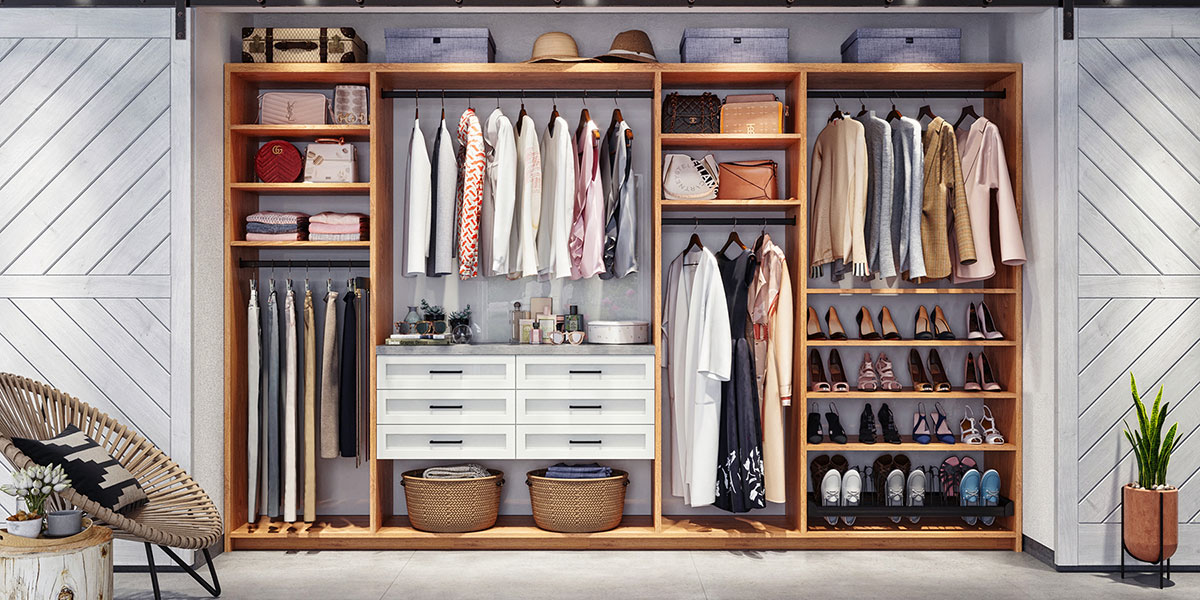
Although every client is different, there are some commonalities. From unorganized or crammed hanging space to not enough room for shoes, clients need help to make their closet space more efficient.
Problem: Organizing Shoes – One of the biggest problems people have is their shoe storage. I have seen people try solutions like hanging plastic or canvas bags, metal shoe trees on the back of the door, small cardboard or wood shelving units, or keeping them in shoe boxes. However, the shoes are still unorganized and hard to see.
Solution: I start by designing a section of shelving for only shoes. I plan the section’s width and height based on the number of pairs. I also factor in the size of the client’s shoe collection. It’s best to store them in pairs sitting side-by-side flat on their soles. This solution allows a person to see their shoes and keep them easily organized. It becomes obvious where to store the shoes after wearing them making it easy to maintain the system.
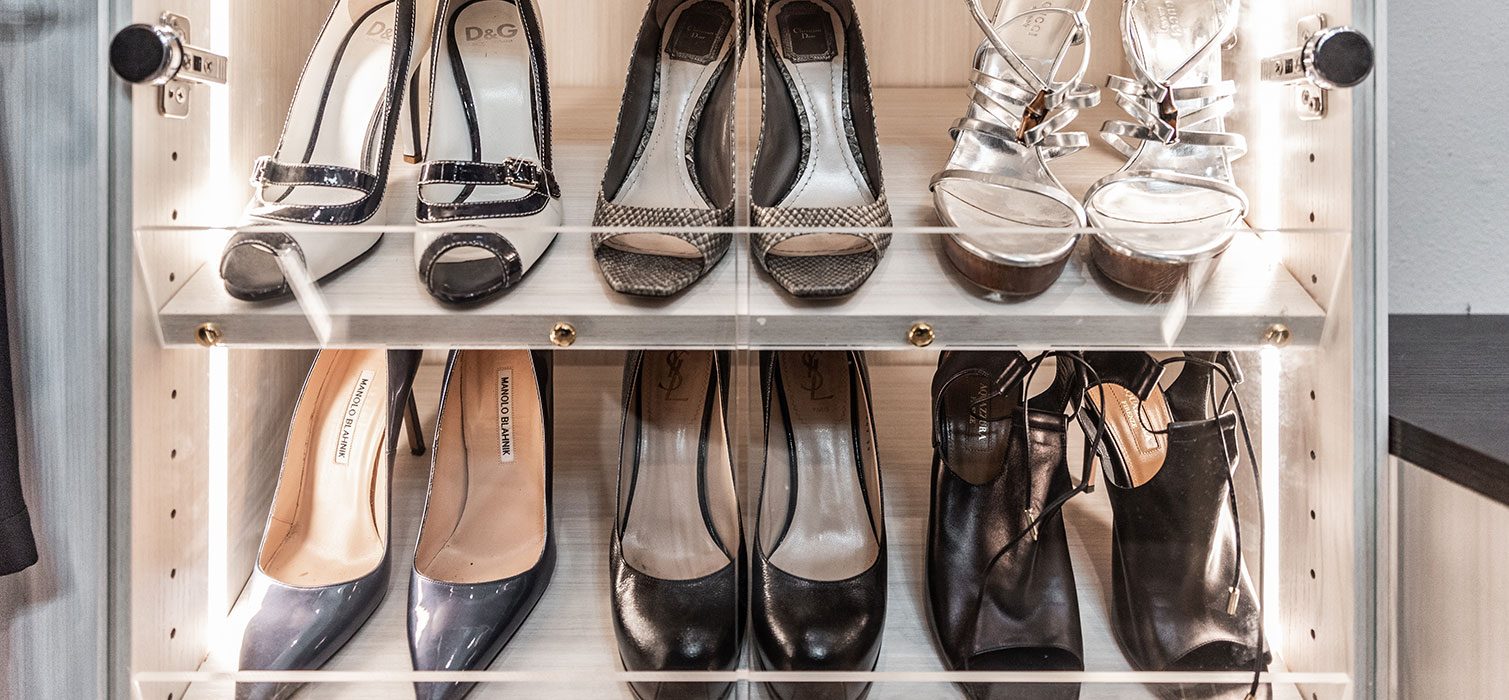
Problem: Not Enough Hanging – Many clients have one rod that extends from side to side of the closet. All of their clothes hang in a row without any rhyme or reason. Clothes tend to get crammed into the closet and are challenging to find and get wrinkled.
Solution: The best antidote is to design sections for long hanging clothes such as dresses and robes, medium sections for pants that hang from their cuffs, and double hanging sections with two rods for separates like tops, blouses, and short skirts. This method immediately increases the hanging space in the closet and organizes clothes. Clients group similar clothes together: daily casual, business casual, and formal wear. I can even plan out the next level of managing their wardrobe, such as grouping by color or arranging by season will make everything more visible.
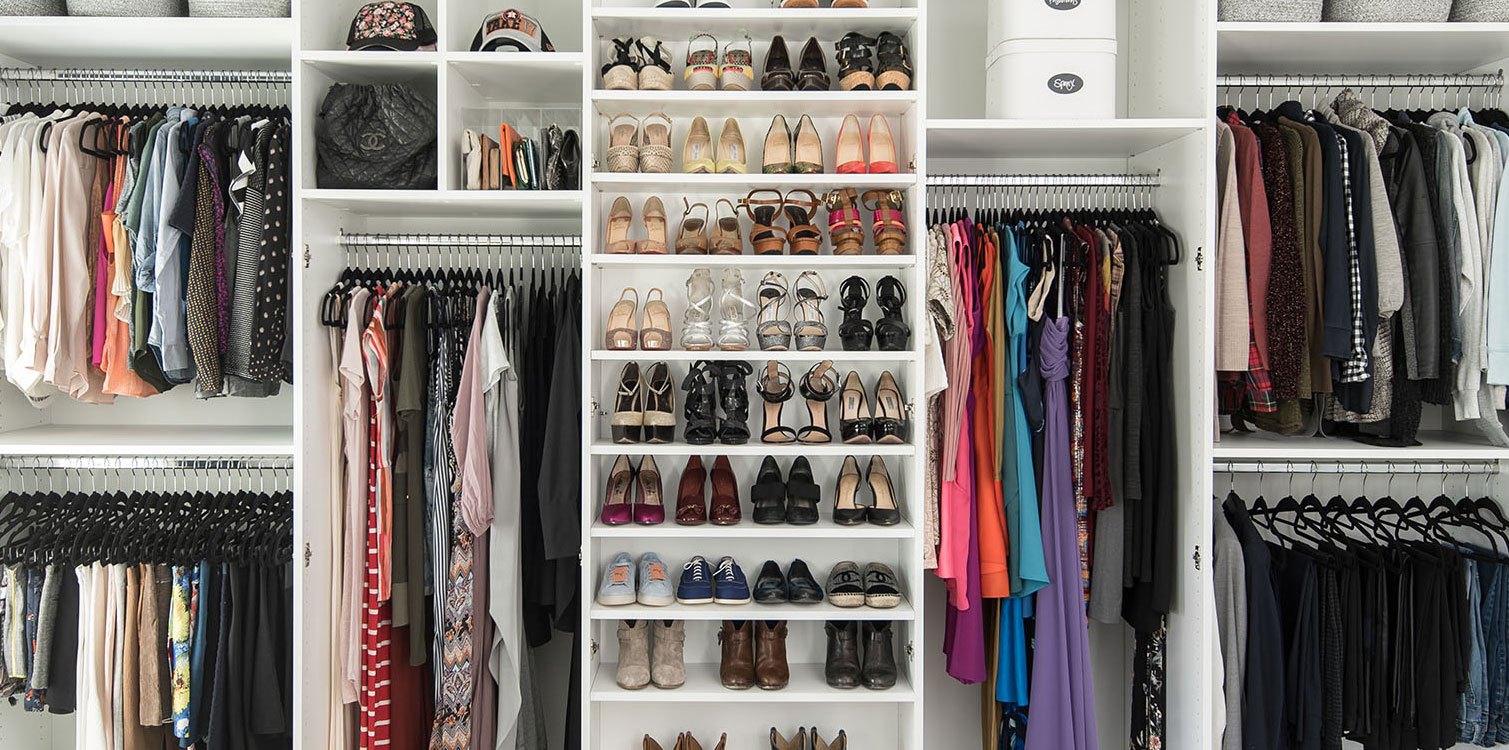
Problem: Limited Shelf Space – It’s common for my clients to have only one shelf that runs from side to side on each wall of their closet. They, in turn, pile so many clothes that pulling one out means they all fall, causing it next to impossible to keep them neatly folded. Other clients store luggage, boxes, and miscellaneous things that are hard to access and look unattractive and cluttered. Some hid the clutter in dresser drawers like their T-shirts, sweaters, and folded clothes but struggle to keep it organized. Once these items are in drawers, they are hard to see and challenging to get to pull out, winding up in a mess.
Solution: Design shelving specifically for folded clothes keeping the sections in widths that suit two piles for folded clothing. Not only can they fit more folded items on the shelves, but they can also see everything and know at a glance what can easily coordinate with other wardrobe items. Shelves are also a great place for purses, hats, and boxes of keepsakes.
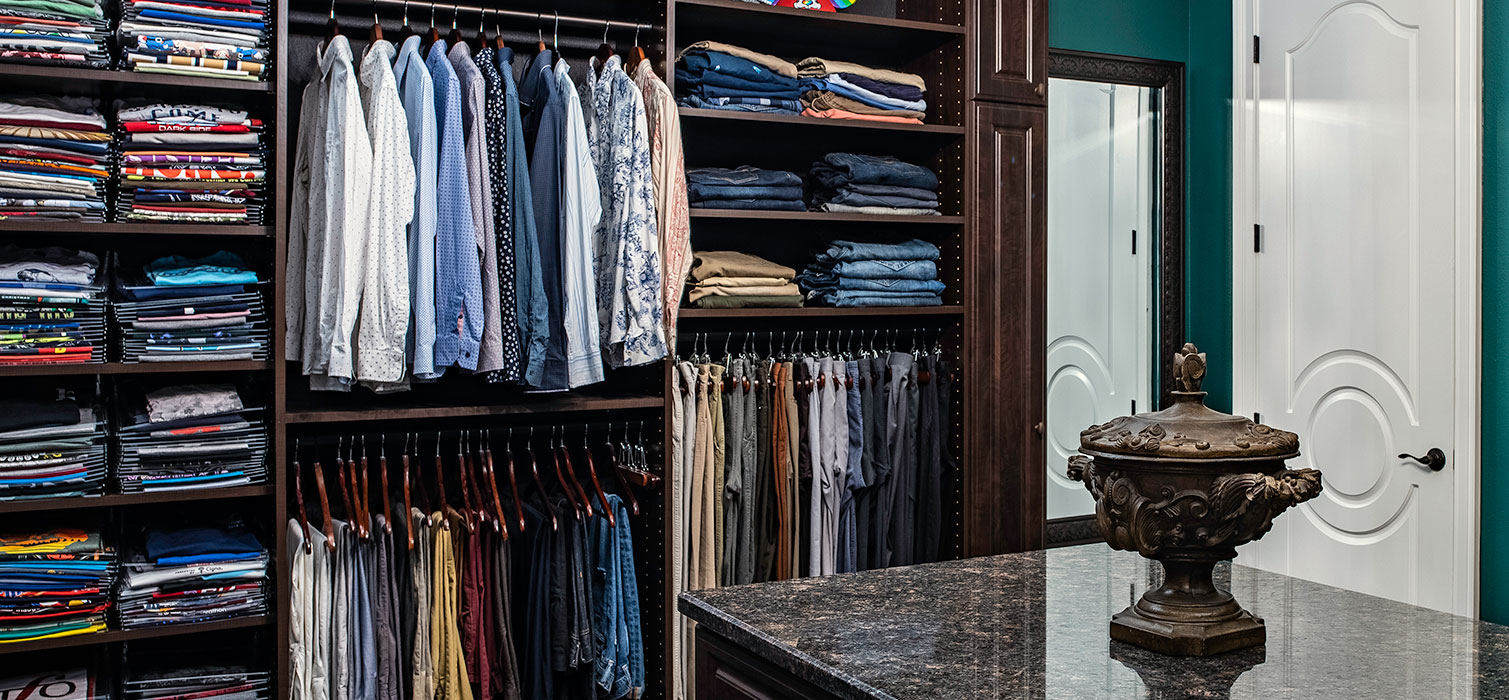
Problem: Clothes Scattered In Different Places – With limited closet space, people only have the option of filing a dresser with things that do not have a spot in the closet. This spreads out the wardrobe so that they have to travel to different areas in the bedroom or perhaps other rooms to get ready.
Solution: By incorporating drawers in the closet, the wardrobe is easily kept together in one place. The ideal set of drawers would hold jewelry, underwear/bras, scarves, socks, and camisoles for women and watches/cufflinks, underwear, socks, undershirts for men. This makes it so easy to choose the right outfit and get ready faster each day.
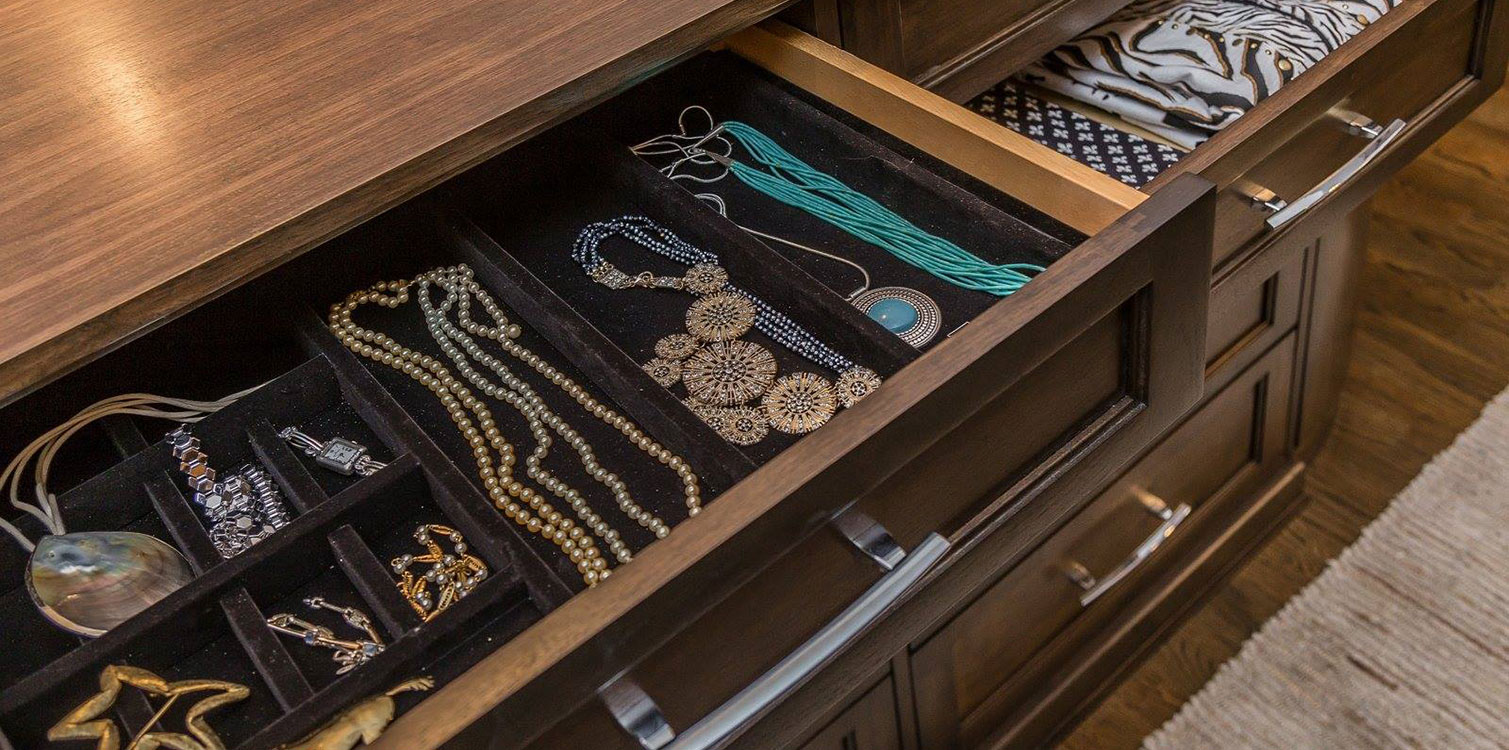
Problem: Belts and Ties Are Hard To Access – When belts and ties are stored on a hanger, they either slip off and become a heap on the floor or the hanger becomes so overloaded that other belts or ties have to be removed every time you get to the one you want. It wastes a lot of time and is very frustrating.
Solution: Look at those trouble points that cause the most stress and look at all possible solutions. Organizing ties and belts so they are stored in regular drawers with plexiglass Cubbie inserts, a double-sided vertical drawer, or perhaps on a stationary rack on the wall. My personal favorite is on a pull-out rack that fits in a hanging section. Not only are they neat and organized but easy to access.
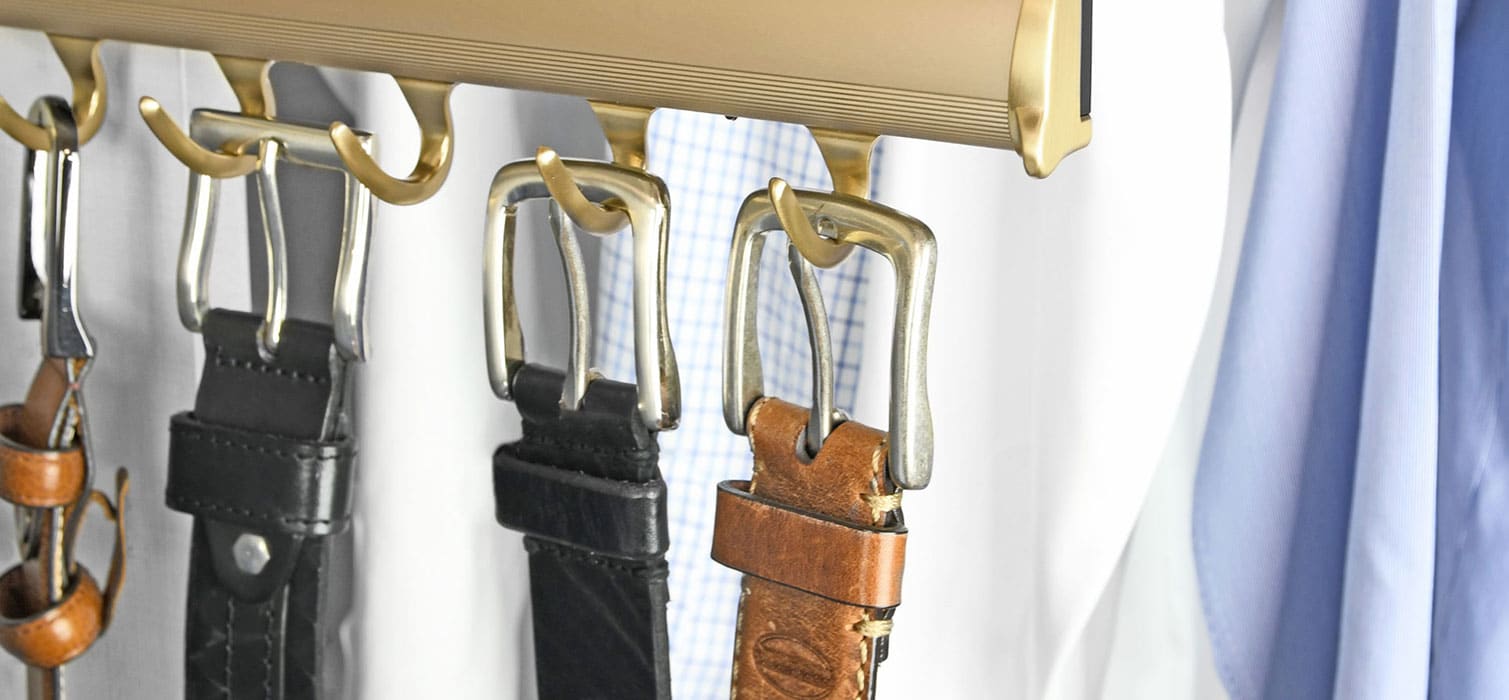
The main focus of any good closet designer is to solve the wardrobe organization problems of each client. I start by asking about the biggest pain points the client is experiencing. (Some are very obvious just by looking at the closet.) I always address those first by designing adequate hanging, ample shelving for shoes and folded clothes, incorporating drawers, and selecting the right accessories. It is a process and one that is always done in conjunction with each client. The end result is a closet that is truly beautiful and extremely helpful to its’ user.
By Kathryn LaBarbera
Each of our custom organization systems is completely personalized and begins with a complimentary design appointment.
Schedule a ConsultDuring the consultation you and a designer will discuss your wish list, desires, and project budget, with the aim of designing an organization system that will: